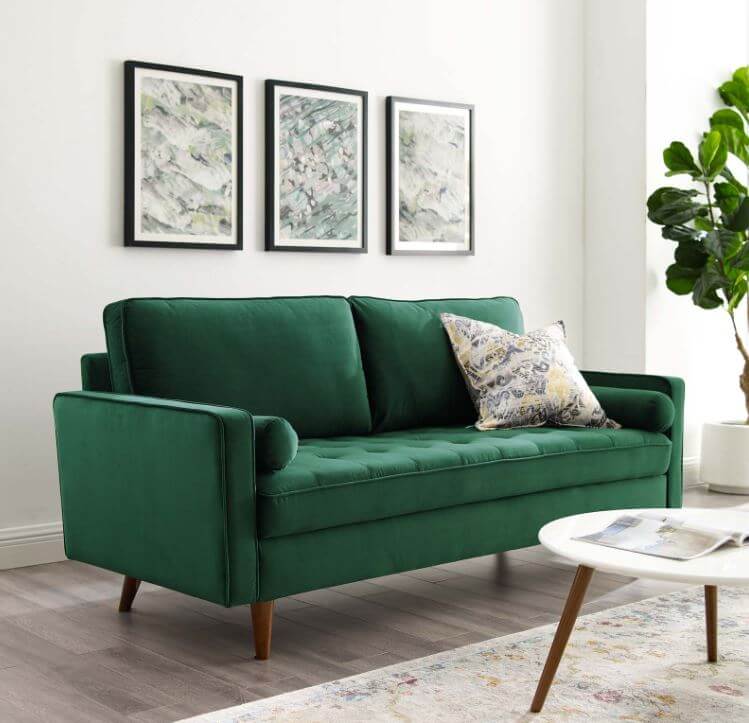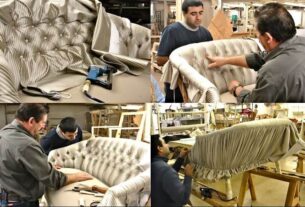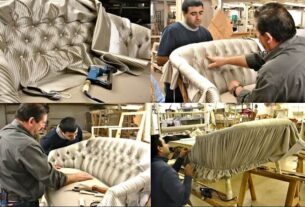As more people become aware of the environmental impact of their choices, sustainability has moved from a niche concern to a mainstream priority. This shift has extended into home décor, particularly when it comes to furniture. One of the most important decisions when purchasing a new sofa is the upholstery material. Choosing an eco-friendly option not only helps reduce your carbon footprint but can also enhance the overall aesthetic and comfort of your living space. In this blog, we will explore the best Sofa upholstery Dubai materials for sustainable living and how they contribute to a more eco-conscious home.
Organic Cotton
Organic cotton is one of the most popular choices for sustainable sofa upholstery. Grown without the use of synthetic pesticides or fertilizers, organic cotton is an environmentally friendly alternative to conventional cotton. This fabric is soft, breathable, and hypoallergenic, making it an excellent option for homes with children or people with allergies.
In addition to being kind to the planet, organic cotton is often made using fair trade practices, which ensures that farmers are paid fairly for their work. Unlike conventional cotton, which is water-intensive and often grown in regions with unsustainable agricultural practices, organic cotton uses less water and promotes soil health through crop rotation and the use of natural fertilizers.
Benefits:
- Soft and breathable for ultimate comfort.
- Hypoallergenic, making it a great choice for sensitive skin.
- Grown using sustainable farming practices that are better for the environment.
Considerations: While organic cotton is durable, it may require more maintenance to keep it looking pristine compared to some other upholstery materials.
Hemp Fabric
Hemp is a fast-growing, sustainable crop that requires very little water and no pesticides. This makes it a fantastic alternative to conventional fabrics, both for the planet and for those looking for eco-friendly options. Hemp fabric is durable, breathable, and naturally resistant to mold and mildew. It also becomes softer over time, offering both comfort and longevity.
In addition to its ecological benefits, hemp fabric is a strong, versatile material that can be woven into a variety of textures and finishes, making it suitable for modern, rustic, or even minimalist décor. Because hemp fibers are naturally resistant to wear and tear, upholstered furniture made from hemp will last longer, reducing the need for frequent replacements.
Benefits:
- One of the most sustainable fabrics available, requiring minimal water and no pesticides.
- Naturally resistant to mold, mildew, and wear.
- Durable, long-lasting, and gets softer with use.
Considerations: While hemp is a great option, it can sometimes be stiffer than other materials, so consider blending it with softer fibers for added comfort.
Recycled Polyester (rPET)
Recycled polyester, also known as rPET, is a fantastic sustainable choice for upholstery. Made from post-consumer plastic waste, such as used water bottles, rPET helps divert plastic from landfills and reduces the need for new polyester production. This process uses fewer resources and less energy compared to manufacturing virgin polyester, making it a more eco-friendly option.
RPet is durable, resistant to stains, and easy to clean, making it a great choice for high-traffic areas or homes with kids and pets. Moreover, rPET can be woven to mimic the appearance of more traditional fabrics, like linen, velvet, or cotton, providing the aesthetic appeal without the environmental cost. Many companies are now incorporating rPET into their furniture lines, offering stylish and environmentally friendly options.
Benefits:
- Made from recycled plastic, reducing waste and promoting circular economy principles.
- Durable and resistant to stains, perfect for busy households.
- Available in a variety of textures, colors, and finishes.
Considerations: While rPET has a smaller environmental footprint than virgin polyester, it’s still a synthetic material and may not be as breathable as natural fibers like cotton or hemp.
Tencel (Lyocell)
Tencel, also known as Lyocell, is a biodegradable fabric made from sustainably sourced wood pulp, often from eucalyptus, beech, or spruce trees. The production process uses a closed-loop system, where water and solvents are recycled, reducing the amount of waste produced. Tencel is incredibly soft and has a luxurious feel, making it a comfortable option for sofa upholstery.
In addition to its luxurious texture, Tencel is moisture-wicking, hypoallergenic, and resistant to bacterial growth, making it an excellent choice for those with sensitive skin or respiratory issues. The fabric also naturally resists wrinkles, reducing the need for ironing or additional maintenance.
Benefits:
- Biodegradable and made from sustainably sourced wood pulp.
- Soft, breathable, and moisture-wicking, ideal for comfort.
- Hypoallergenic and resistant to bacteria, making it a good choice for sensitive skin.
Considerations: Tencel can be a bit more expensive than some other eco-friendly options, but the comfort and durability it provides may make it worth the investment.
Wool Upholstery
Wool is a natural fiber known for its durability, breathability, and excellent insulation properties. When sourced sustainably, wool is a great eco-friendly upholstery option, as it is biodegradable, renewable, and often produced through ethical farming practices. Wool upholstery is highly resistant to stains and odors, making it an ideal choice for those who want a low-maintenance yet sustainable option for their sofa.
Wool is also naturally flame retardant, so it requires fewer chemical treatments compared to synthetic fibers. Additionally, wool can regulate body temperature, keeping you warm in the winter and cool in the summer, providing year-round comfort.
Benefits:
- Renewable, biodegradable, and often produced through ethical farming practices.
- Naturally resistant to stains, odors, and flame retardants.
- Comfortable, temperature-regulating, and durable.
Considerations: Wool can be more expensive than some other materials, and it may require occasional dry cleaning to maintain its appearance.
Cork Fabric
Cork fabric is an innovative upholstery option made from the bark of cork oak trees. The process of harvesting cork is sustainable because the tree’s bark regenerates after it’s harvested, making it a renewable resource. Cork fabric is durable, water-resistant, and easy to clean, making it an excellent choice for furniture upholstery.
The material has a unique, natural look, offering an eco-friendly alternative to traditional leather or vinyl. It’s also lightweight and hypoallergenic, making it a good option for those with sensitivities.
Benefits:
- Made from renewable cork bark, which regenerates after harvest.
- Water-resistant and easy to clean.
- Lightweight and hypoallergenic, offering a sustainable alternative to leather.
Considerations: Cork fabric may not offer as much variety in texture or pattern as other upholstery materials, but its unique look can be a major selling point for those seeking something distinctive.
Conclusion
As consumers continue to prioritize sustainability, the demand for eco-friendly sofa Upholstery Abu Dhabi options is on the rise. From organic cotton and hemp to Tencel and cork fabric, there are a variety of materials that combine durability, comfort, and style with environmentally responsible production methods. When choosing upholstery for your next sofa, consider not only the aesthetics and comfort but also the environmental impact. By opting for sustainable materials, you can create a beautiful, functional living space that aligns with your values and helps protect the planet for future generations.




